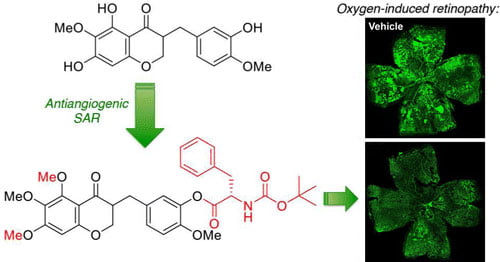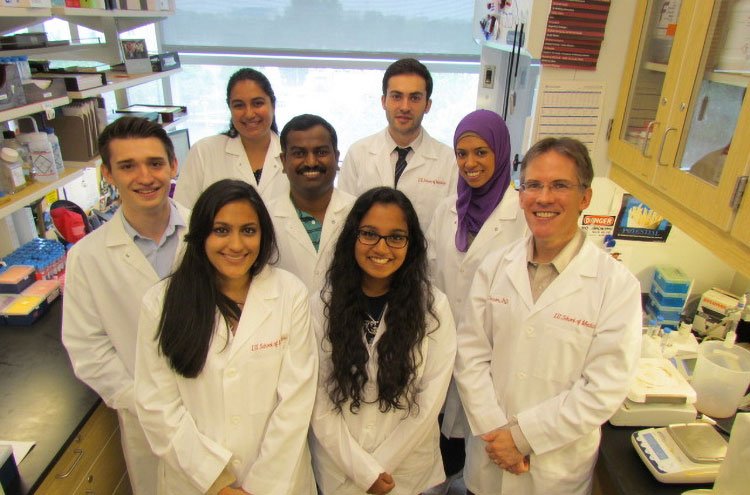Photo Above: The Corson Lab Group. Timothy Corson front right.
Journal of Medicinal Chemistry. “Synthesis and Biological Evaluation of Novel Homoisoflavonoids for Retinal Neovascularization,” Helesha D. Basavarajappa, Bit Lee, Hyungjun Lee, Rania S. Sulaiman, Hongchan An, Carlos Magaña, Mehdi Shadmand, Alexandra Vayl, Gangaraju Rajashekhar, Eun-Yeong Kim, Young-Ger Suh, Kiho Lee, Seung-Yong Seo, and Timothy W. Corson. Department of Ophthalmology, Indiana University School of Medicine, Indianapolis. (June 2015, vol. 58) This study was conducted with IRRF support — Timothy W. Corson.
ABSTRACT: Eye diseases characterized by excessive angiogenesis such as wet age-related macular degeneration, proliferative diabetic retinopathy, and retinopathy of prematurity are major causes of blindness. Cremastranone is an antiangiogenic, naturally occurring homoisoflavanone with efficacy in retinal and choroidal neovascularization models and antiproliferative selectivity for endothelial cells over other cell types. The Corson Lab group undertook a cell-based structure-activity relationship study to develop more potent cremastranone analogues, with improved antiproliferative selectivity for retinal endothelial cells. Phenylalanyl-incorporated homoisoflavonoids showed improved activity and remarkable selectivity for retinal microvascular endothelial cells. A lead compound inhibited angiogenesis in vitro without inducing apoptosis and had efficacy in the oxygen-induced retinopathy model in vivo.
To access the full report CLICK HERE
Dr. Corson was supported by IRRF for two years, 2014 – 2015. In addition to the above referenced paper, Synthesis and Mechanistic Studies of a Novel Homoisoflavanone Inhibitor of Endothelial Cell Growth, was published in 2014 in the journal Plos One. Also published in 2014 was, The first synthesis of the antiangiogenic homoisoflavanone, cremastranone, included in the Journal Organic & Biomolecular Chemistry. Dr. Corson reported further findings of IRRF-supported work at the 2015 annual meeting of the Association for Research in Vision and Ophthalmology (ARVO).
To read more about Timothy Corson, PhD and the Corson Lab, CLICK HERE





